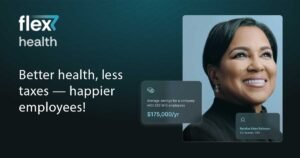Introduction
When it comes to managing employee benefits, businesses face a constant challenge: how to provide valuable healthcare perks without breaking the bank. Enter the Section 125 plan—a powerful tool that offers employer healthcare tax savings while boosting employee take-home pay. If you’re new to the concept of cafeteria plans or wondering how they can transform your benefits strategy, you’re in the right place. This guide breaks down what a Section 125 plan is, how it delivers pre-tax healthcare benefits, and why it’s a win-win for employers and employees alike.
Understanding the Basics: What Is a Section 125 Plan?
A Section 125 plan, often called a cafeteria plan, is an IRS-approved benefits program under Section 125 of the Internal Revenue Code. It allows employees to pay for certain healthcare expenses—like premiums for supplementary plans, telemedicine, or preventative care—with pre-tax dollars. These contributions are deducted from their paycheck before federal income tax, Social Security, and Medicare taxes are applied. The result? Significant tax savings for both the employee and the employer.
Unlike traditional health insurance, a Section 125 plan isn’t a one-size-fits-all policy. It’s a flexible framework that lets businesses customize benefits to fit their workforce’s needs. Employers can offer options like dental coverage, vision care, or even wellness perks, while employees choose what suits them best—hence the “cafeteria” nickname.

How Section 125 Plans Deliver Tax Savings
The magic of a Section 125 plan lies in its tax advantages. For employers, the savings come from reduced payroll taxes. Since employee contributions are pre-tax, the taxable payroll shrinks, lowering the amount you pay in FICA (Social Security and Medicare) taxes. For a midsize business with 250 employees, this can translate to thousands of dollars saved annually—money that can be reinvested into growth or additional perks.
Employees, meanwhile, see a direct boost in their net pay. By diverting a portion of their salary to pre-tax healthcare benefits, they reduce their taxable income. For example, an employee earning $50,000 who contributes $2,000 to a Section 125 plan might save $500–$600 in taxes (depending on their tax bracket). That’s extra cash in their pocket without changing their gross salary—a tangible perk that enhances job satisfaction.
These Section 125 tax incentives make it a no-brainer for businesses looking to optimize their benefits budget while keeping employees happy. It’s a rare case where the IRS offers a legal loophole to save money—and it’s fully compliant when implemented correctly.
Why Employers Love Section 125 Plans
Beyond employer healthcare tax savings, Section 125 plans offer strategic advantages. First, they’re customizable. Whether you’re a startup with 10 employees or an established firm with 10,000, you can tailor the plan to include benefits like unlimited telemedicine, teletherapy, or preventative care—options that boost workforce health without the complexity of major medical insurance.
Second, they’re cost-effective. Traditional health plans often require hefty employer contributions, but a fully funded Section 125 plan—like the one offered by Flex Health—shifts the funding burden away from your bottom line. Employees opt in voluntarily, and the plan is structured to minimize upfront costs for the business.
Finally, Section 125 plans enhance your benefits package without replacing existing coverage. They work alongside ACA-compliant insurance, adding supplementary perks that make your company stand out in a competitive hiring market. Healthier, happier employees mean lower turnover and higher productivity—outcomes every employer wants.
The Employee Perspective: More Money, Better Benefits
For employees, the appeal of a Section 125 plan is twofold: financial and practical. The tax savings directly increase their take-home pay, which feels like a raise without negotiation. Plus, they gain access to pre-tax healthcare benefits that might otherwise be out of reach—like affordable vision care or virtual doctor visits.
Take telemedicine as an example. With a Section 125 plan, employees can use pre-tax dollars to access unlimited virtual consultations, skipping copays and commutes. In a post-pandemic world, that’s a perk that resonates. Add in preventative care options, and they’re empowered to stay healthy, reducing sick days and stress.
Is a Section 125 Plan Right for Your Business?
If you’re weighing whether a Section 125 plan fits your company, consider your goals. Are you looking to cut payroll taxes? Attract top talent with modern benefits? Improve employee wellness without ballooning costs? If so, this IRS-approved strategy could be your answer. It’s approved by the Department of Insurance in all 50 states, making it a scalable solution for multi-state employers too.
That said, implementation matters. The IRS has strict rules—contributions must be irrevocable, plans must be documented, and eligibility must be clear. Partnering with a provider like Flex Health ensures compliance while simplifying the process. Their fully funded Section 125 plan takes the guesswork out of setup, offering white-glove onboarding and a suite of benefits tailored to your workforce.
Take the Next Step with Flex Health
A Section 125 plan isn’t just a tax trick—it’s a smarter way to manage benefits. It delivers employer healthcare tax savings, boosts employee net pay, and provides access to practical healthcare perks. Whether you’re new to cafeteria plans or ready to upgrade your current offerings, Flex Health has you covered. Our fully funded solution, approved nationwide, combines tax incentives with employee wellness features like telemedicine and preventative care.
Ready to see how much you could save? Contact Flex Health today to explore our Section 125 plan and start building a healthier, more cost-efficient workplace.



